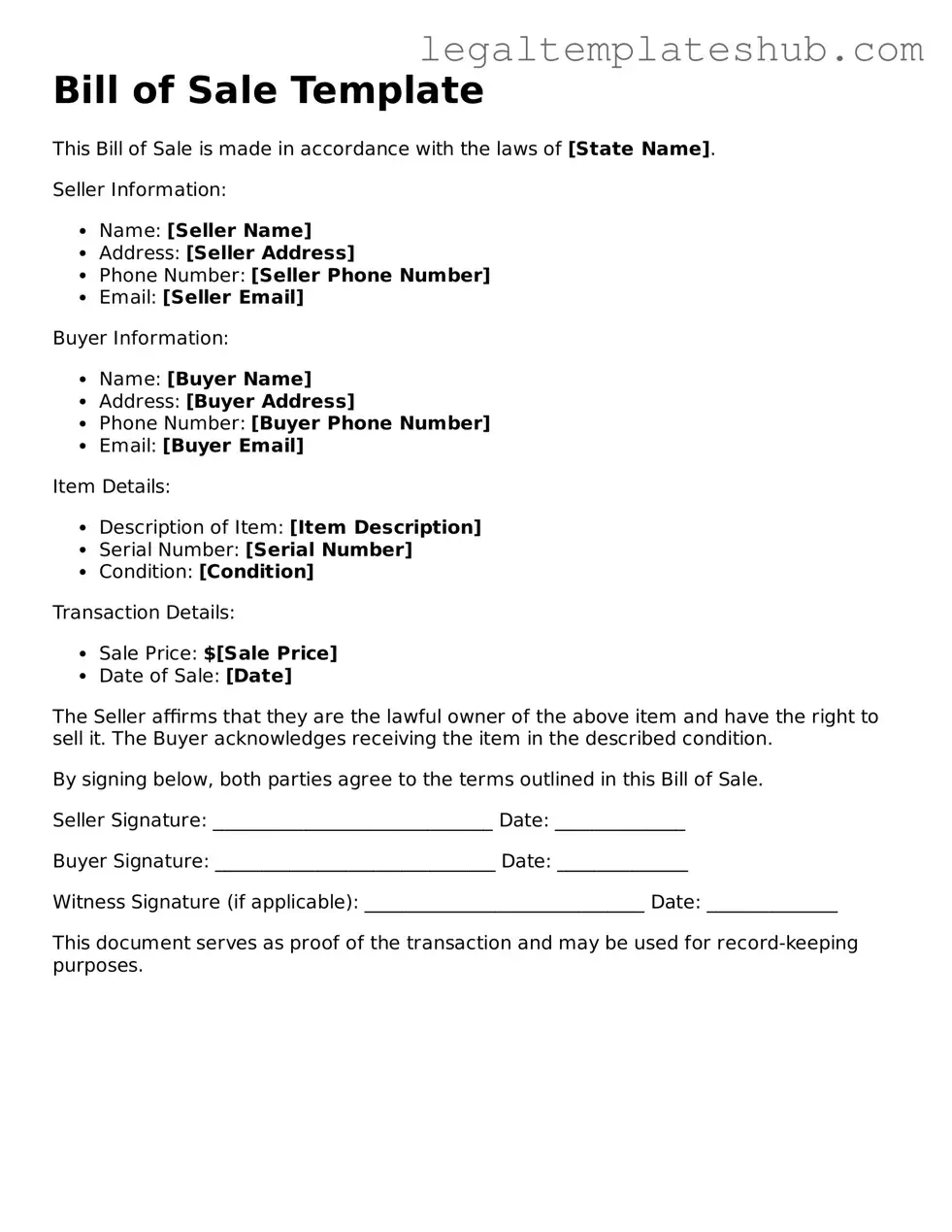Printable Bill of Sale Template
A Bill of Sale is a legal document that serves as proof of the transfer of ownership of an item from one party to another. This form is essential for both buyers and sellers, as it outlines the details of the transaction, including the item description, sale price, and date of sale. Understanding its importance can help ensure a smooth transfer process, so consider filling out the form by clicking the button below.
Access Editor
